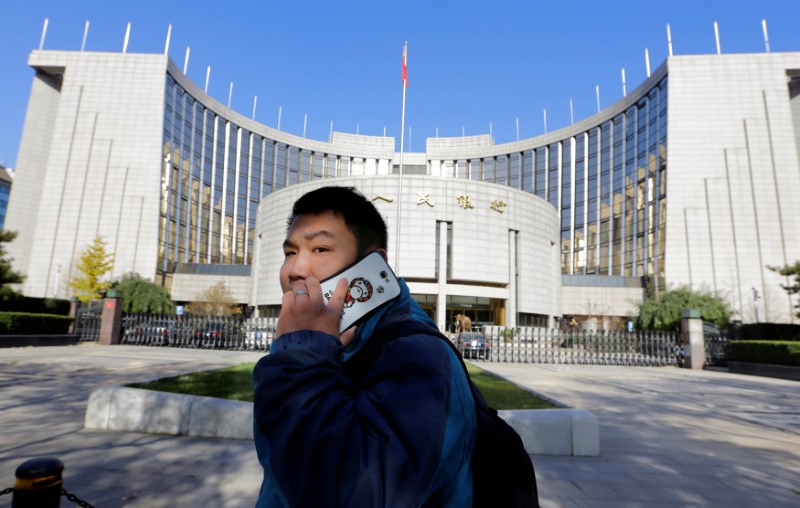(Bloomberg) -- China will likely cut the cost of medium-term loans to banks for the third time this year on Thursday, as it aims to ensure sufficient liquidity in the financial system.
The People’s Bank of China (OTC:BACHY) is expected to roll over at least part of the 200 billion yuan ($28 billion) in the medium-term lending facility that comes due on Thursday, at a charge lower than the current 2.95%, according to analysts. They are anticipating a cut of up to 20 basis points in the one-year loan rate.
A reduction in the policy rate would be a concrete easing step by Beijing following the PBOC’s vow of “more powerful” policies. It would also be key to bolstering sentiment in the bond market, which is bracing for a flood of local government debt sales aimed at funding infrastructure spending. Chinese banks, which are the major buyers of the bonds, are estimated to have to amass as much as 1.77 trillion yuan this month to make the purchases, among other needs.
The bond market may react negatively to send yields higher if the central bank disappoints traders with no rate cut, said Brad Gibson, co-head of Asia Pacific fixed income portfolio management at AllianceBernstein (NYSE:AB) in Hong Kong. “The market will be prone to bouts of weakness if sufficient liquidity is not provided or if there is perception that liquidity is reduced,” he said.
Authorities have introduced a series of measures to keep liquidity ample and drive borrowing costs lower to head off the negative impact of the coronavirus outbreak. Still, expectations on further interest rate cuts are “strong”, given current market rates remain “significantly” lower than policy rates, state-controlled China Securities Journal said on a front-page commentary last week. An MLF rate reduction would mark the third one this year.
Ongoing weakness in the economy also calls for more stimulus, with early official indicators for April showing deepening factory deflation while consumer inflation slowed. Top leaders have said China will increase its fiscal deficit as a share of gross domestic product and sell more infrastructure bonds in part of efforts to stabilize the economy. That would make a more accommodative monetary policy necessary to create a favorable environment for the bond issuance.
Cheaper MLF cost may lead to lower loan prime rates. The LPRs, decided by a group of 18 banks and reported on or around the 20th of every month in the form of a spread over MLF rate, have been considered China’s de facto benchmark funding cost since a reform last year. The one-year LPR was trimmed to 3.85% last month versus 4.05% in March following the PBOC’s MLF rate cut of 20 basis points in April.
©2020 Bloomberg L.P.
